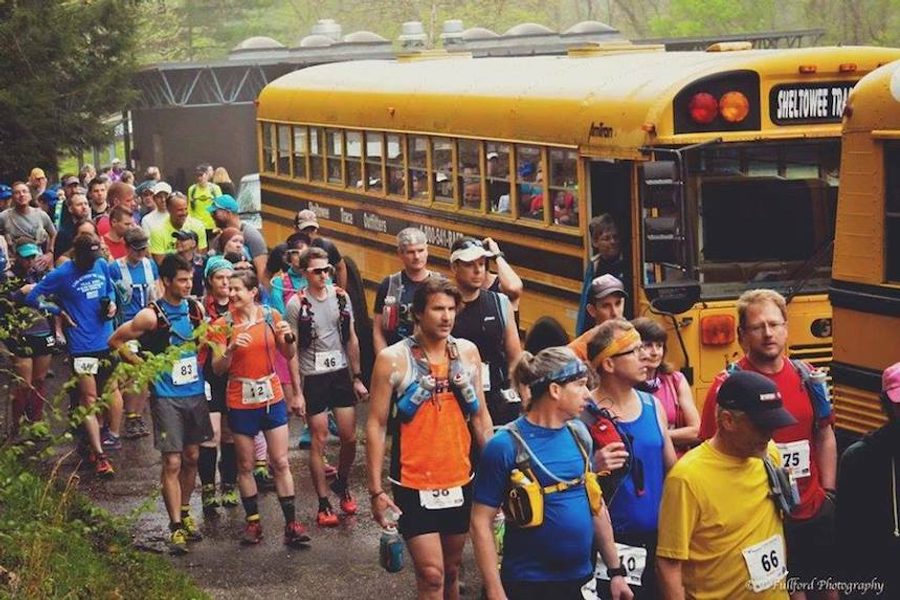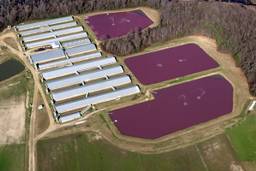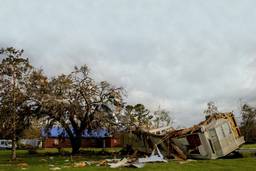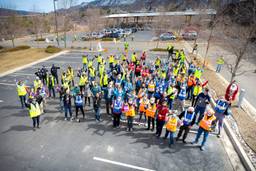From Punk Rock to Ultramarathons, Diverse Economies Are Taking Shape in Coal Country
Nico Gendron

From Kentucky to Ohio, generations of Appalachian people have made their homes amidst rugged and often unforgiving mountain terrain. They’ve fed their families mining the region’s coal to heat homes across America. That was until the late 1990s, when coal production began to plummet with rising demand for natural gas.
Eastern Kentucky was particularly hard hit. Between 2000 and 2015, coal production in the region dropped by 80 percent. In 2009 there were 14,098 residents of eastern Kentucky employed by the mines, according to the Kentucky Department for Energy Development and Independence’s coal report. By 2015 the number had dropped to 5,897.
Stripped of their economy and a way of life, eastern Kentuckians have been pushed to find alternative economies, particularly in tourism. They have created unique attractions spanning punk music, community theater, and ultramarathons to bring in outsiders, and their money.
Whitesburg was one of the first communities to chart an alternative economy by becoming a breeding ground for punk music.
“Punk music was the single thing that expanded my horizons as a teenager,” says Evan Smith, a native of Whitesburg who after college and law school returned to become an attorney for the Appalachian Citizens’ Law Center. He says that punk was the single thing that most expanded his horizons as a teenager because it was difficult to get any new music in the small mountain town.
“I had a friend in Whitesburg whose sister was working for a music magazine in New York City. Every month, she would send a care package home with magazines and up to 50 CDs,” he says. He and his friends began to consider how to make music more accessible to the rest of their peers.
The first local punk shows in Whitesburg were put on from 1996 – 1999, Smith says.
“Bands would play in an elementary school gym in the middle of nowhere because someone would have a family member who worked at the school,” he says. “There would only be a show about once a month, but 10 bands would come out.”
Smith is a 10th-generation Appalachian whose parents are documentary filmmakers affiliated with Appalshop, a private nonprofit organization founded in 1969 that says it contributes more than $1.5 million in salaries and programming into the local economy each year.
When Smith was a teenager, Appalshop bought an abandoned car dealership that was converted into a 100-seat theater for punk and DIY shows. The organization helped establish Youth Bored, a group that put on punk shows at the dealership that attracted folks from across Kentucky and from as far away as Virginia, North Carolina and Tennessee.
Mikie Burke was in middle school when Youth Bored was launched. He was 15 years old when he began selling tickets to shows.
“I used to tell venues that I wanted to host a birthday party and they would rent the space to me for $20,” Burke says. “The local judge finally caught on and realized I was too young.” The judge made him give back the money he was making.
“But the other kids just gave me more money so I could keep the profit I made, after paying the bands, to keep the shows coming,” he says.
Burke, now 27 with a 7-year-old daughter, works as a mixed media and tattoo artist and tours with a punk band. He says that coal was important to the community and it kept people fed, but his focus is now on the new economy taking hold in town.
“The loss of it has made eastern Kentucky a more artistic place. It has made Whitesburg a little hidden gem and pushed people to venture here to see what we are doing,” he says.
Harlan, about 45 miles from Whitesburg, once was home to miners who made between $64,000 – $80,000 a year. Today, the median annual income in Harlan is $23,955.
Higher Ground Theater was born from the void left behind by the collapsed coal industry. The project reimagines narratives of drug abuse, teen pregnancy, and labor unrest reflected in communities throughout eastern Kentucky,
Carrie Billett, who spent 10 years helping low-income families rehabilitate substandard housing, was drawn to Higher Ground in 2009 because of its emphasis on oral history; each theatrical production is inspired by the firsthand accounts of Harlan County residents collected by their neighbors.
“There are endless sides to every story,” Billet says. “Sometimes when we look at history and current events, we look at the facts, but oral history is a way to look at the way that people experience things. You can learn a lot about a person by listening to the story they tell and the way they tell it.”
Higher Ground and its productions are funded through grants, but ultimately the money is put back into local Harlan businesses and makes it possible for anyone at any income level to get involved.
Billett says Higher Ground can’t replace the lost coal economy revenue, but it helps raise awareness of the issues former coal communities are facing. A performance in September proved just how much: It was the first of its kind to be commissioned by the Center for Substance Abuse Prevention.
“Needlework was directly aimed at working to get ahead of and prevent an epidemic of Hep C and AIDS,” Billett says. “It’s about reducing current and future burden of health care costs on a community affected by drug abuse. It’s about keeping people in and bringing people back into the workforce. It’s recognizing that when we talk about the future economy we have to continue to build a stronger and healthier community.”
Stearns is another ex-coal community and is a two-and-a-half-hour drive from Harlan and Whitesburg. Longtime residents like Andy Powell, who is the director of communications and marketing at University of the Cumberlands in nearby Williamsburg, have turned their attention to Appalachia’s natural beauty and how it can be used to attract tourism.
In 2009, Powell was approached by Brian Gajus, a runner from Knoxville, Tennessee, who founded Ultranaut Running. Gajus was interested in planning an ultra-race in Stearns through an old coal camp.
“We never had an opportunity like this,” Powell says. “Stearns was kind of lost in terms of standard business opportunities.” About 60 percent of people in town who are able to work are on government assistance, according to census data.
Powell and Gajus hosted the first Yamacraw Race in Stearns in 2015. About 100 people signed up that first year for 10K and 50K runs. By 2017, that number had grown to 650 runners.
The route runs along a mountain ridge where Powell’s great-grandfather once lived and rode a mule to the mine each day. The route also includes the old tram road where coal was transported.
Powell says Stearns’ transformation from an extraction economy to one of conservation is exemplified by the Yamacraw race.
“And it’s working. We have had runners from 23 states and Canada represented in this race. The guy who won the race most recently was from Oregon,” he says.
For the 2017 race, the Kentucky Department of Adventure Tourism calculated the uptick in tourism revenue the race brought to Stearns was $150,000 for one weekend.
Yamacraw has been instrumental in validating a tourism economy.
“Local people are distrusting of tourism as a legitimate economy,” Powell says. “They want factories because they don’t believe tourism can create viable jobs and economic opportunities.”
“But [now] they are starting to see it at gas stations and restaurants and campgrounds during Yamacraw,” he says.
“Appalachians are some of the toughest, most independent people on Earth. We made a life in one of the most rugged places in the United States, and we can do it again,” he says.
(“The Surprising Tourist Destinations Reviving Coal Country” was first published in YES! Magazine. It was funded in part by a grant from the One Foundation.)

I hope you found this article important. Before you leave, I want to ask you to consider supporting our work with a donation. In These Times needs readers like you to help sustain our mission. We don’t depend on—or want—corporate advertising or deep-pocketed billionaires to fund our journalism. We’re supported by you, the reader, so we can focus on covering the issues that matter most to the progressive movement without fear or compromise.
Our work isn’t hidden behind a paywall because of people like you who support our journalism. We want to keep it that way. If you value the work we do and the movements we cover, please consider donating to In These Times.



